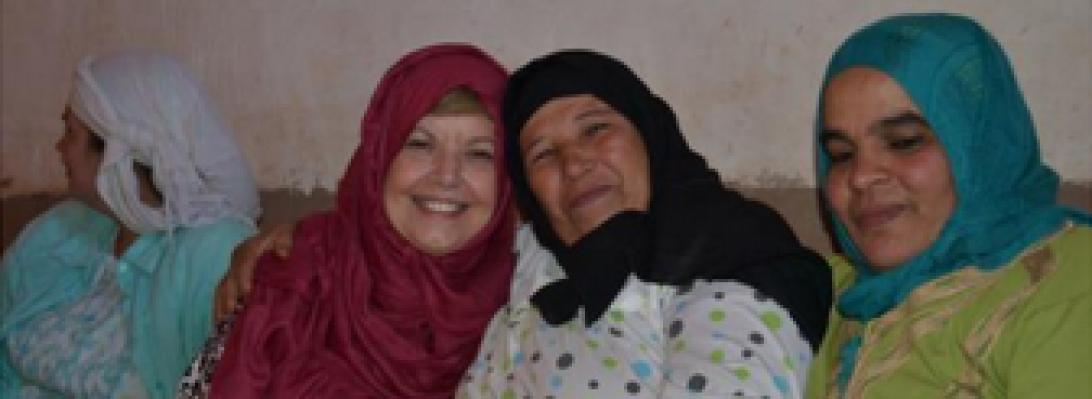We are back in Morocco now after two weeks in Turkey and Kazakhstan. We spent four days in Istanbul and then a total of eight days in three different cities in Kazakhstan. That is exactly three more cities than I could have named in Kazakhstan prior to our planning for this trip.
I regret that my usual pattern of relating current experiences that we have on these stays on other continents could not be maintained during this trip. With our friend’s sudden physical decline and increasingly dire reports of his condition, we spent a lot of time with their families prior to leaving Fes on October 5. Abdelhak remained in a coma most of the next week and passed away in Birmingham on October 12. I want to thank all of you who have assisted Touria and her children in various ways. Also, you have helped us by being our agents of care and compassion during our absence.
We spent a couple of nights in Casablanca visiting with some friends before departing for Istanbul on Tuesday, October 7. Denise and I had never been in Turkey before and had high expectations from the reports we heard from those of you had been there before. The flight from Casablanca was about five hours, and a two hour time difference made our arrival time there late in the afternoon. Since we had scheduled four days in Istanbul, we took the first day as sort of a rest and orientation day, the second as a work day, and the last two for some tourism. I’ll limit my comments today to our first two days there.
Denise had made a good choice of hotels for us and we were situated right in the middle of the main downtown area where many of the must see sites are located. The Sultan Ahmed Mosque, better known as the Blue Mosque (pictures included), was only a couple of blocks away. Since we had scheduled some appointments on Thursday, we thought we needed to learn how to get around, get a sense of where we would need to go, and increase our comfort level using public transportation like the tram and metro system. Thus we spent some time just navigating around the city.
Istanbul has a population of 14.1 million, if Wikipedia can be believed. Although there is a wide disparity when looking at lists of the world’s largest cities, according to one method, Istanbul is the “sixth largest city proper” in the world. City proper here means suburbs are not included. Regardless of its rank, it is definitely a huge city and has a history of extreme importance.
Western civilization was of course greatly influenced by the establishment of Constantinople after Constantine became emperor in 324. Soon thereafter he laid out plans to create a new Christian city to replace the original city of Byzantium, which traces its origin to around 660 B.C. Six years later, May 330, Constantinople became the capital of an empire that became known as the Byzantine Empire. During the Middle Ages Constantinople retained its position as the largest and wealthiest city in Europe, and at times as the largest city in the world.
In May 1453, after an eight-week siege (during which the last Roman emperor, Constantin XI, was killed), Sultan Mehmed II captured Constantinople and declared it the new capital of the Ottoman Empire. Soon thereafter, the sultan rode to the Hagia Sophia, the largest cathedral in Constantinople, summoned an imam to proclaim the Islamic creed, and converted the grand cathedral into an imperial mosque. Mehmed declared himself to be the equivalent of Caesar of Rome and the Ottoman state became an empire. The Ottoman Dynasty claimed the status of caliphate in 1517, with Constantinople remaining the capital of this last caliphate for four centuries.
A series of wars plagued the ailing empire’s capital in the early twentieth century. The last of these, World War I, resulted in the British, French, and Italian occupation of Constantinople. The final Ottoman sultan was exiled in November 1922; the following year, the occupation ended with the signing of the Treaty of Lausanne and the recognition of the Republic of Turkey. The city’s name became Istanbul officially in 1930, though the Ottomans had referred to it by that name for four centuries. Thus, in its history, Istanbul had served as the capital of three different empires, the Byzantine, Roman and Ottoman. Additionally, its geographic location, in the middle of the “silk route” made it a major contributor to the commercial development of those countries lying between China and Europe.
Denise and I had a more pragmatic interest in establishing a few facts about the city the first couple of days. Our three appointments, all with people involved one way or another with facilitating the study in the U.S. of university students, challenged us to come up with a strategy for being able to get not only to the area of the city in which they were located, but actually locating the building and office corresponding to the addresses we had. Since signs were in Turkish and often appear as unknown images to us, the task became even more difficult. Fortunately, with e-mail and the use of significant landmarks to assist us, we managed to make our meetings and present the case for JSU being a good place for their students to have an overseas experience.
I might also add that in our efforts to locate addresses and particular individuals we were helped significantly by ordinary citizens who just wanted to do a good deed for a traveler to their city. We had been told that we would find the Turkish people friendly and helpful. We definitely came away with that impression.
Fred
Pictures 2 & 3 by Denise



